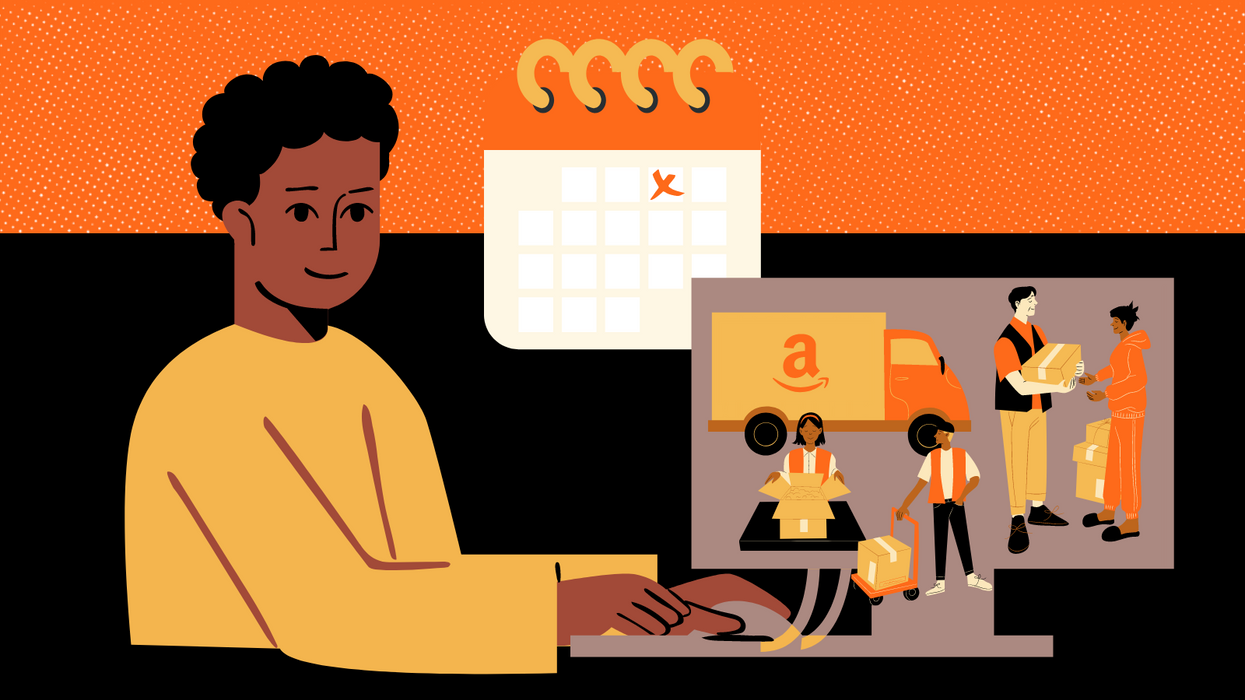Retail Channels
16 June 2022
Amazon Prime Day 2022 is set for July 12-13
The deals start flowing before the event formally begins. It's time for sellers to make final preparations.

Amazon announced this year's Prime Day dates. (Courtesy photo)
The deals start flowing before the event formally begins. It's time for sellers to make final preparations.

Amazon announced this year's Prime Day dates. (Courtesy photo)
Amazon Prime Day 2022 will take place on July 12-13.
That was the announcement from Amazon on Thursday morning, ending speculation among brands and sellers. The deals event officially kicks off at 12 a.m. PST on July 12, and runs through the end of the day on July 13.
Held since 2015, Amazon Prime Day offers deals on products sold by national brands and third-party sellers alike. Now a two-day event but still called Prime Day, this year’s discount extravaganza is being held across 20 countries. From Amazon’s perspective, it’s all centered around offering discounts to Amazon Prime, the company’s long-running membership program that offers members free shipping and returns.
For brands and other sellers, it’s a big opportunity to get in front of millions of shoppers. While the deals that typically come to mind are for TVs, instant pots and Ring doorbells, there are a bevy of products offered from brands of all sizes on Prime Day. That makes the announcement of the date closely-watched throughout the ecommerce and retail community.
On its first quarter earnings call in April, the ecommerce platform tucked in news that its annual deals event will take place in July. Almost two months later, there’s much more fanfare around the official announcement of the dates. It’s now clear that it will be a mid-July event.
Amazon also previously shared key deadlines for sellers, which still apply.
The timing squares with what Jon Elder, who consults with Amazon sellers as founder and CEO of Black Label Advisor, expected when he shared tips for Prime Day sellers with The Current earlier this year. Check out The Current's full guide.
The announcement of the date for Prime Day signals that preparations are set to move into full gear. Amazon previously shared the following deadlines:
For sellers, that means the time to monitor inventory closely across Fulfillment by Amazon (FBA) and Fulfillment by Merchant (FBM) has arrived, Elder said.
“Sellers will need to be extra watchful with their check-in times at FBA warehouses and have their FBM listing ready to go in case there are any delays,” Elder said Thursday.
Prime Day has become a veritable holiday on the ecommerce calendar, with activity building to a fever pitch in the days leading up to the event. Amazon is doing its part to help that push this along year. In fact, it is offering early deals starting on June 21.
On Thursday, the company announced a flurry of activities taking place in the days before Prime Day. They also demonstrate how Prime membership ties in with Amazon’s constellation of other subscription offerings. Offers include:
The deal activity extends beyond the Amazon sphere, as well. Brands and retailers outside of the platform often run their own discount events, creating a so-called halo effect that boosts ecommerce spending for all around Prime Day. With the elevated attention to buying goods, brands often see a boost while marketing through their preferred channels, as well.
This year, Prime Day arrives in the midst of a pandemic-era economic swing that happens to center on price. Record inflation is driving prices up, leaving many shoppers conscious of deals. At the same time, costs are going up for businesses, potentially limiting what sellers can offer.
There are already warnings emerging that Prime Day spending may be lower this year. A survey of 1,137 shoppers from RetailMeNot states that the average shopper is expecting to spend $388 on Prime Day this year, down from 2021's planned spend of $594. Nevertheless, it remains a magnet event, as 88% of shoppers plan to participate, the survey states. There are also signs of shifting shopper interests, as home decor and fitness equipment that were popular in the pandemic are each down five percentage points in terms of share of expected spend.
This dynamic adds importance to the incentives that Amazon is offering. Elder pointed out that this is the first Prime Day in which the company is offering the Buy Now, Pay Later benefit through Affirm, the fintech company with which the company signed a partnership in August of last year.
“This should boost sales for sellers across all categories as it presents customers with additional flexibility for making purchases this Prime Day,” Elder said. “My guess is that this is strategic to boost Prime Day sales to combat rising inflation and plummeting consumer sentiment.”
Spurred by Amazon, price was a key area where ecommerce had an advantage over traditional retail that helped it grow. Holding Prime Day at a time when deals are top of mind could be a shining example of how it remains an important part of the equation.
As if to underscore the point, Prime Day might not be the only Amazon deals event to be held this fall. According to a report in Business Insider, Amazon is planning to center Prime in a deal event this fall. In communications viewed by the news outlet, sellers are being asked to submit lightning deals by July 22, with a shipment deadline on September 12. The deals event could bring a boost to Amazon sales at a time when it is looking to get back to topline growth of its consumer business following a disappointing first quarter by its own lofty standards. For sellers, it means more opportunities to tap into Amazon's ability to attract shoppers, even as some could effectively be managing two events at once.
Amazon partnered with Hexa to provide access to a platform that creates lifelike digital images.
A 3D rendering of a toaster from Hexa and Amazon. (Courtesy photo)
Amazon sellers will be able to offer a variety of 3D visualizations on product pages through a new set of immersive tools that are debuting on Tuesday.
Through an expanded partnership with Hexa, Amazon is providing access to a workflow that allows sellers to create 3D assets and display the following:
Selllers don't need prior experience with 3D or virtual reality to use the system, according to Hexa. Amazon selling partners can upload their Amazon Standard Identification Number (ASIN) into Hexa’s content management system. Then, the system will automatically convert an image into a 3D model with AR compatibility. Amazon can then animate the images with 360-degree viewing and augmented reality, which renders digital imagery over a physical space.
Hexa’s platform uses AI to create digital twins of physical objects, including consumer goods. Over the last 24 months, Hexa worked alongside the spatial computing team at Amazon Web Services (AWS) and the imaging team at Amazon.com to build the infrastructure that provides 3D assets for the thousands of sellers that work with Amazon.
“Working with Amazon has opened up a whole new distribution channel for our partners,” said Gavin Goodvach, Hexa’s Vice President of Partnerships.
Hexa’s platform is designed to create lifelike renderings that can explored in 3D, or overlaid into photos of the physical world. It allows assets from any category to be created, ranging from furniture to jewelry to apparel.

The result is a system that allows sellers to provide a new level of personalization, said Hexa CEO Yehiel Atias. Consumers will have new opportunity see a product in a space, or what it looks like on their person.
Additionally, merchants can leverage these tools to optimize the entire funnel of a purchase. Advanced imagery allows more people to view and engage with a product during the initial shopping experience. Following the purchase, consumers who have gotten a better look at a product from all angles will be more likely to have confidence that the product matches their needs. In turn, this can reduce return rates.
While Amazon has previously introduced virtual try-on and augmented reality tools, this partnership aims to expand these capabilities beyond the name brands that often have 1P relationships with Amazon. Third-party sellers are an increasingly formidable segment of Amazon’s business, as they account for 60% of sales on the marketplace. Now, these sellers are being equipped with tools that enhance the shopping experience for everyone.
A video displaying the new capabilities is below. Amazon sellers can learn more about the platform here.
Hexa & Amazon - 3D Production Powerhousewww.youtube.com